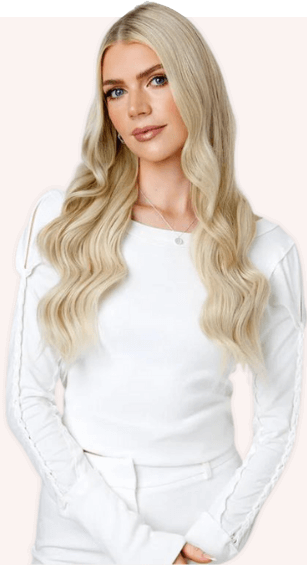When it comes to transforming your hair with extensions, the foundation of your decision begins with understanding weft types. In the professional hair extension industry, two primary contenders dominate the market: hand-tied wefts and machine wefts. These aren’t just technical terms – they represent fundamentally different approaches to hair extension manufacturing that directly impact how your extensions will look, feel, and perform. This guide breaks down everything you need to know about hand-tied weft vs. machine weft hair extensions, helping you navigate this important decision with professional insight and clarity.
As specialists who have worked with thousands of clients seeking hair transformations, we’ve seen firsthand how this critical choice can make or break the extension experience. The wrong selection might leave you with uncomfortable wear, premature shedding, or an unnatural appearance, while the right choice can deliver that seamless, confidence-boosting transformation you’re seeking.
I. What Are Weft Hair Extensions?
Before diving into the comparison, let’s establish what weft extensions actually are.
A weft refers to the foundation structure where hair strands are secured together to create a continuous “curtain” of hair. This structure is what allows the extensions to be attached to your natural hair. Weft extensions are among the most popular methods for adding length and volume because they can cover more area with fewer attachment points compared to individual methods like fusion or micro-links. This means less stress on your natural hair and often a more comfortable wearing experience.
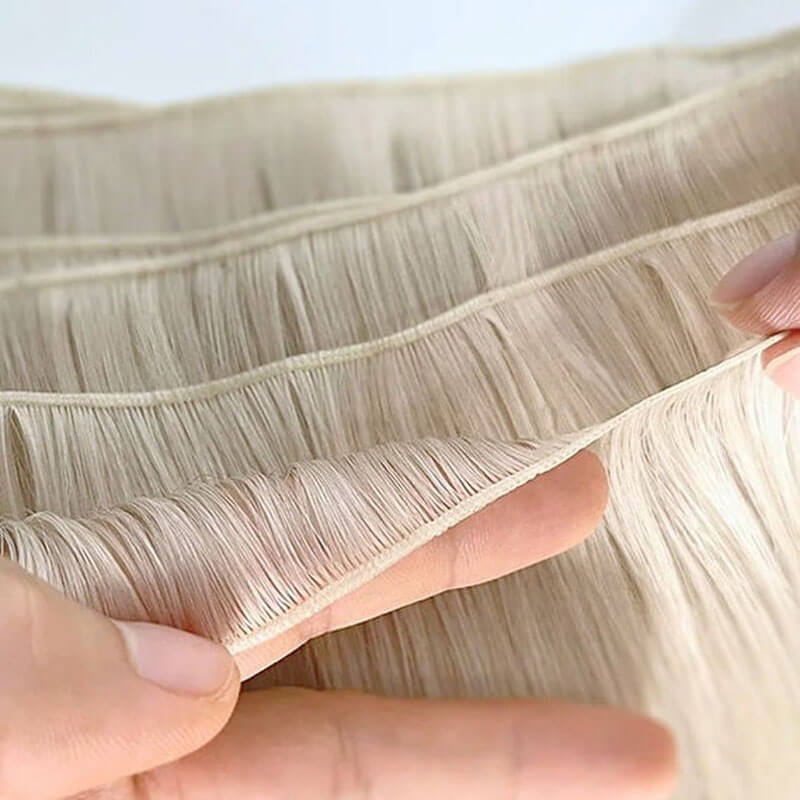
The key difference between various weft extensions lies in how this foundation is constructed – either by skilled human hands or by industrial machinery – and this distinction carries significant implications for everything from application techniques to overall comfort.
II. Hand-tied Weft Hair Extensions: Craftsmanship in Detail
Hand-tied weft extensions represent the premium tier of weft construction. As the name suggests, these wefts are meticulously created by skilled technicians who hand-tie small sections of hair onto a thin, flexible foundation thread by thread. This artisanal approach creates an extraordinarily thin and flexible weft base.
Characteristics of Hand-tied Wefts

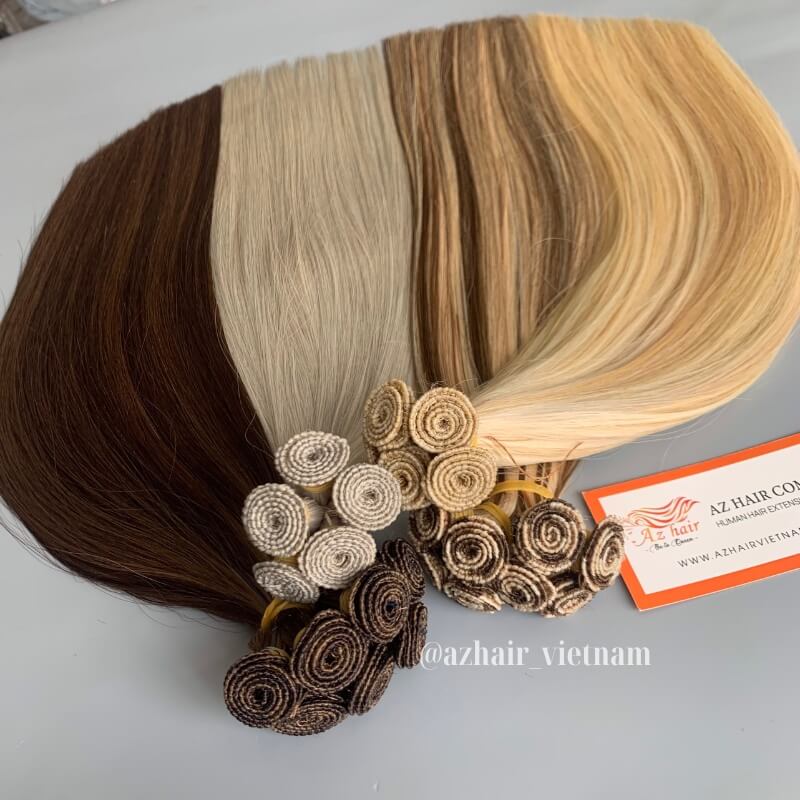

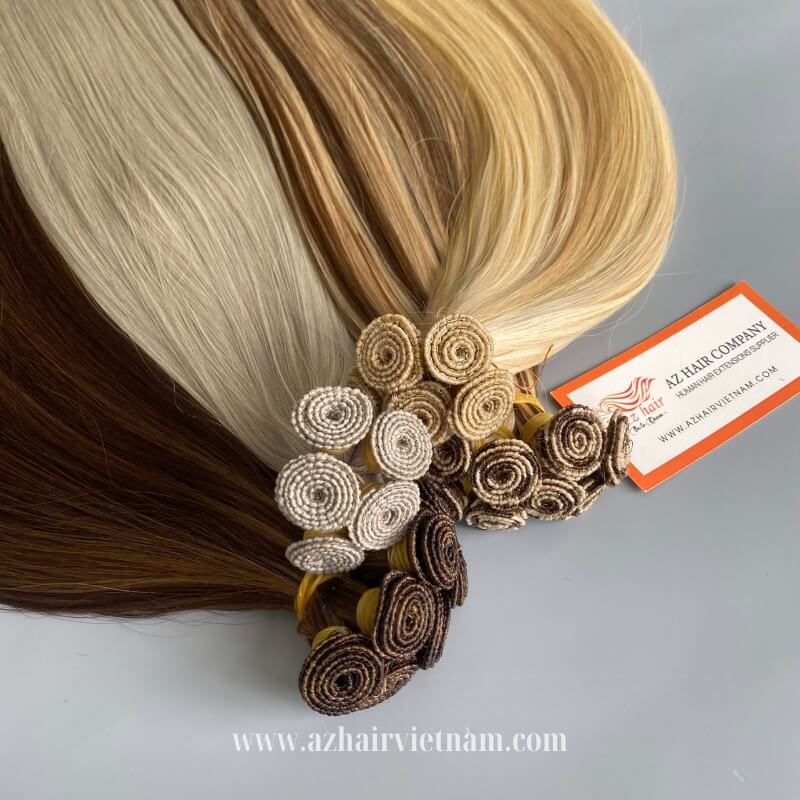

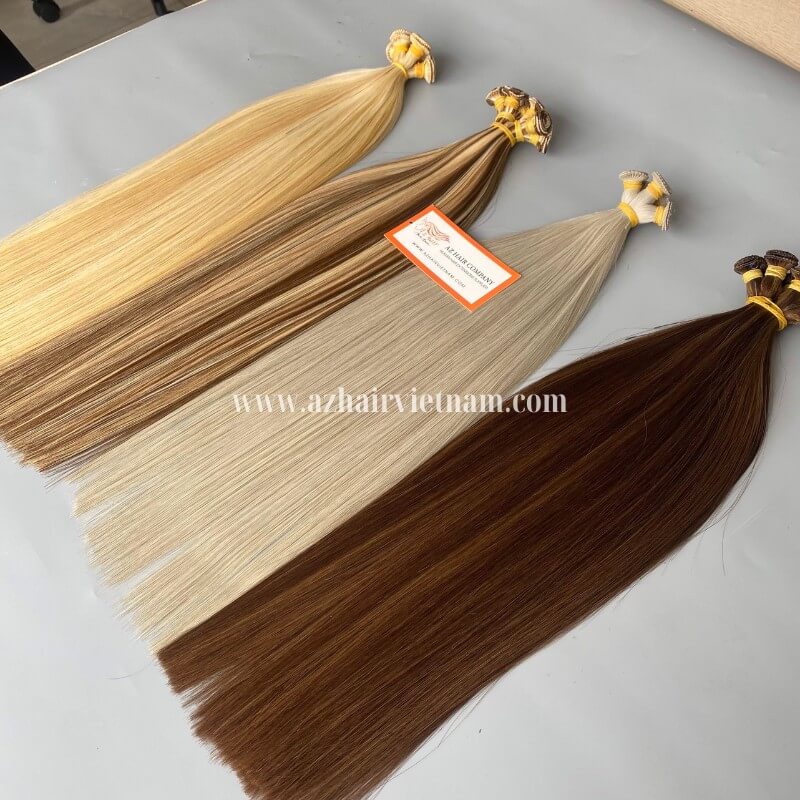
- Ultra-thin Construction: Hand-tied wefts feature a significantly thinner base compared to machine-made alternatives. The weft track can be up to 50% thinner than machine wefts.
- Superior Flexibility: These wefts bend and move naturally with your head, conforming to the curvature of your scalp in ways that rigid machine wefts cannot match.
- Lightweight Feel: Due to their minimal foundation, hand-tied wefts create virtually no bulk at the attachment points, resulting in a weightless wearing experience.
- Natural Movement: The flexible foundation allows the hair to swing and move more like your natural hair, with fewer restrictions.
III. Machine Weft Hair Extensions: Efficiency and Strength
Machine weft extensions are created using high-speed sewing machines that stitch hair strands onto a thicker, more structured foundation. This industrialized process allows for consistent production at scale.
Characteristics of Machine Wefts
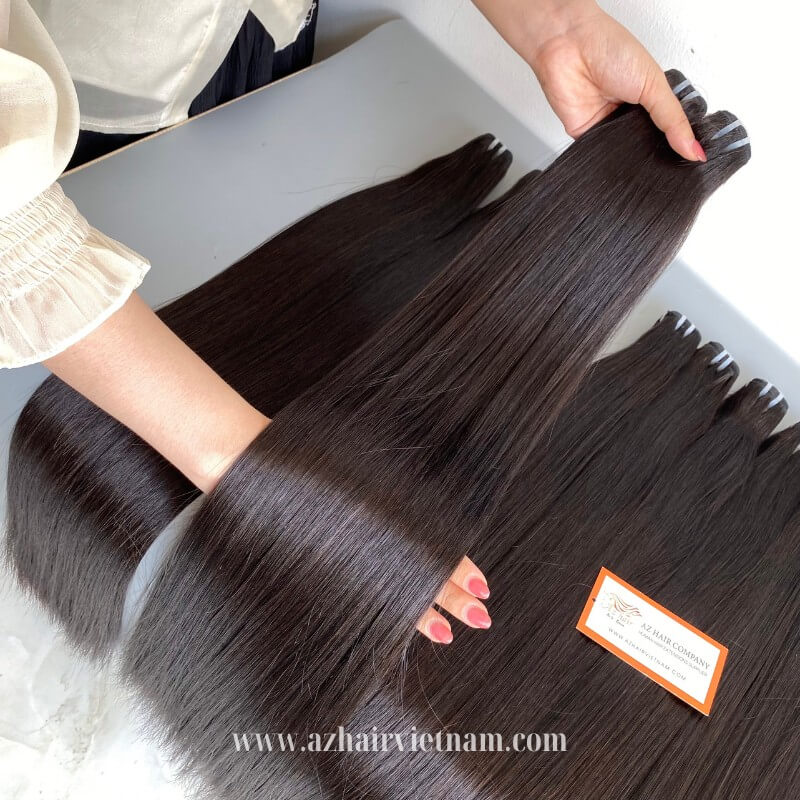
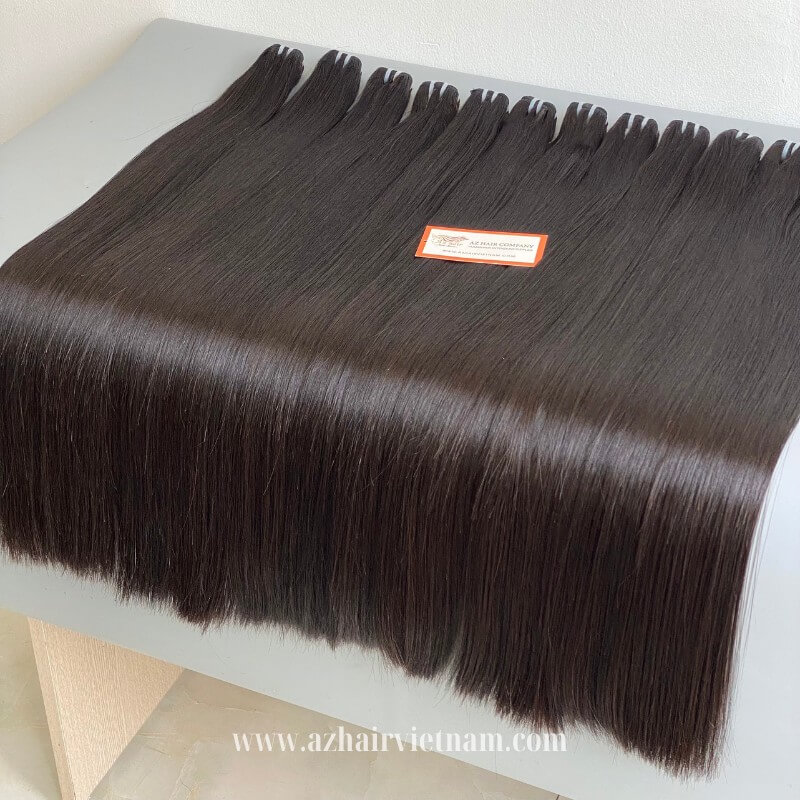
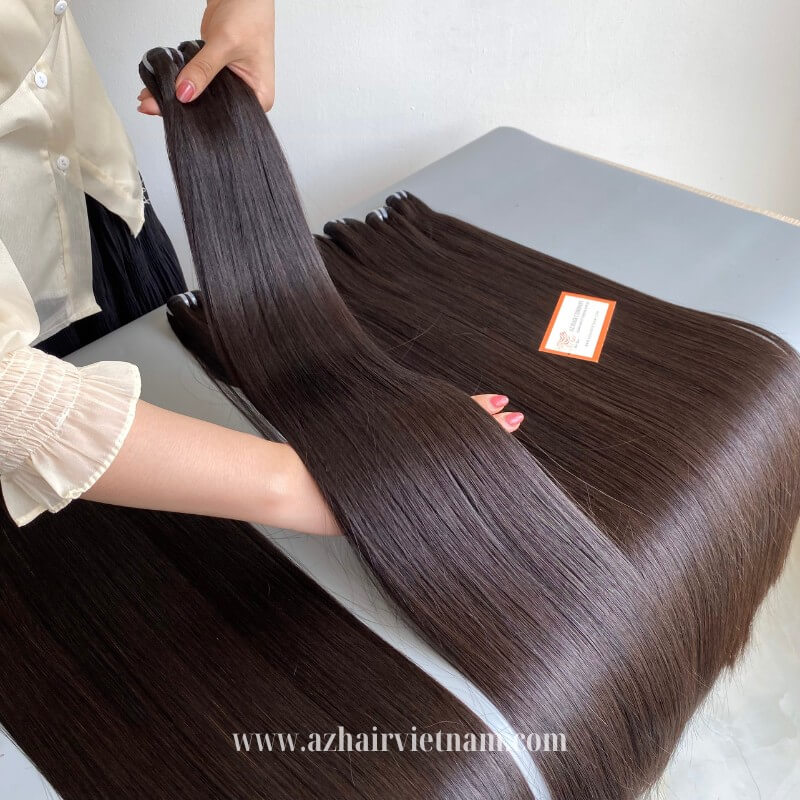
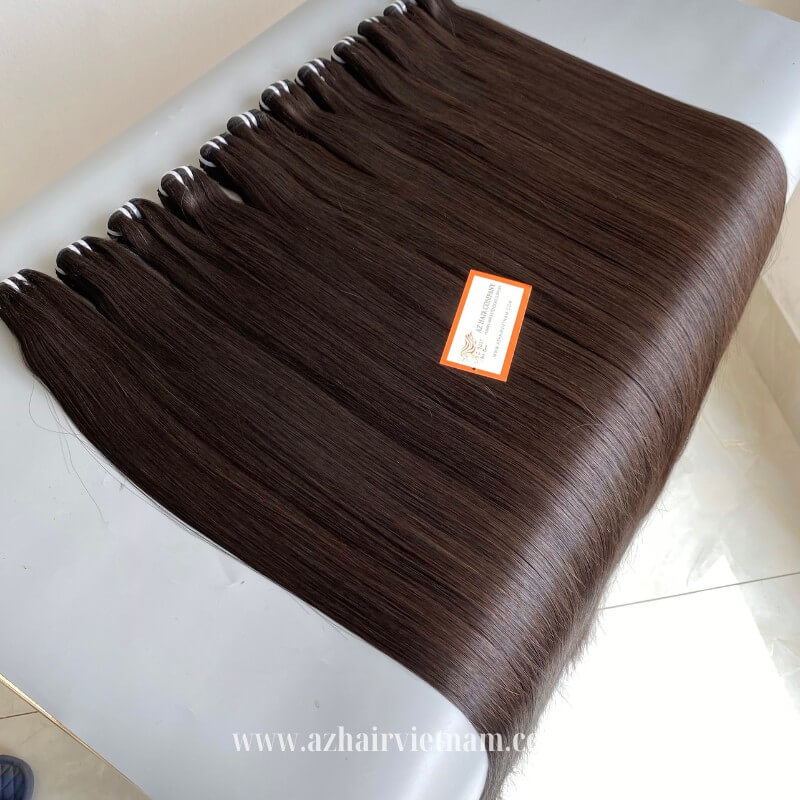
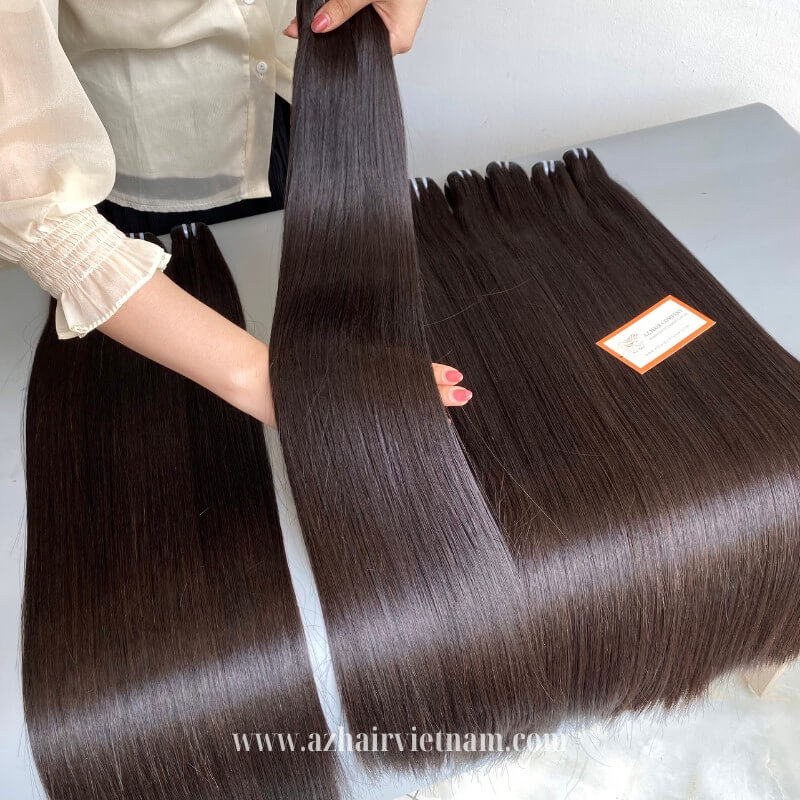
- Thicker Base: Machine wefts have a more substantial foundation that can be felt when running fingers through the hair.
- Strong Construction: The machine-stitched base creates a durable weft that resists shedding with proper care.
- Cost-Effective Production: The automated manufacturing process makes these wefts more affordable than hand-tied alternatives.
- Various Thicknesses Available: Machine wefts come in different weights and densities, from standard to “thin” machine wefts (which are still typically thicker than genuine hand-tied options).
IV. Head-to-Head Comparison: Hand-tied vs. Machine Weft Extensions
There are plenty of key attributes that separate hand-tied and machine weft extensions, the primary reason being their manufacturing. Nonetheless, we’ll illuminate the most notable elements of each and explain specifically how and why they differ.

1. Hand-tied Weft vs Machine Weft Extensions: Comfort Factor
Hand-tied Wefts:
- Feel virtually weightless once installed
- Create minimal bulk against the scalp
- Move naturally with head movements
- Rated 9/10 for comfort by most wearers
Machine Wefts:
- More noticeable weight, especially with larger installations
- Can create some bulk at attachment points
- Slightly restricted movement compared to hand-tied options
- Typically rated 6-7/10 for comfort
2. Hand-tied Weft vs Machine Weft Extensions: Appearance and Blending
Hand-tied Wefts:
- Nearly undetectable integration with natural hair
- Superior movement that mimics natural hair behavior
- No visible bulkiness at the roots
- Exceptional for updos and versatile styling
Machine Wefts:
- Good integration when properly applied
- Slightly less natural movement, especially near attachment points
- May create some visible thickness at the root area
- Can be more challenging for certain updo styles due to thickness
3. Hand-tied Weft vs Machine Weft Extensions: Longevity and Durability
Hand-tied Wefts:
- With proper care, the last 9-12 months before replacement
- Require maintenance appointments every 6-8 weeks
- More delicate during washing and styling
- Higher investment initially, but often longer-lasting
Machine Wefts:
- Typically lasts 6-9 months before replacement
- Require maintenance appointments every 5-7 weeks
- More resilient to rougher handling during care routines
- Lower initial investment, but may need replacement sooner
4. Hand-tied Weft vs Machine Weft Extensions: Cost Considerations
Hand-tied Wefts:
- Higher premium for the product (20-40% more expensive)
- More expensive application (requires specialized training)
- Longer installation time (3-5 hours typical)
- Higher maintenance costs due to specialized care
Machine Wefts:
- More affordable product cost
- Lower installation fees (faster application)
- Shorter installation time (2-3 hours typical)
- More standard maintenance requirements
V. Hand-tied Weft vs Machine Weft Extensions: Installation Process Differences
1. Hand-tied Weft Installation
The installation of hand-tied wefts is generally more meticulous:
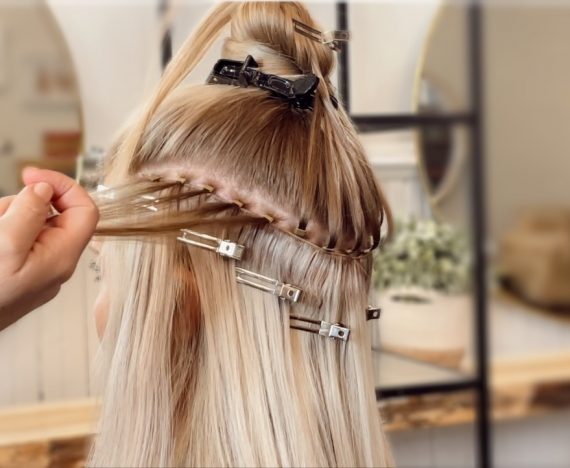
- Careful Sectioning: The stylist creates precise, clean sections to ensure the wefts lay flat against the scalp.
- Bead Placement: Tiny silicone-lined beads are clamped onto small sections of natural hair.
- Weft Customization: Each weft is custom-cut to fit the exact width needed for each section.
- Sewing Technique: The weft is sewn onto the beaded row using specialized threading techniques.
- Multiple Rows: Depending on the desired volume, 2-4 rows are typically installed.
This process takes significant skill and training, explaining the higher service cost. However, the results offer unparalleled comfort and natural appearance.
2. Machine Weft Installation
Machine weft installation follows a different approach:
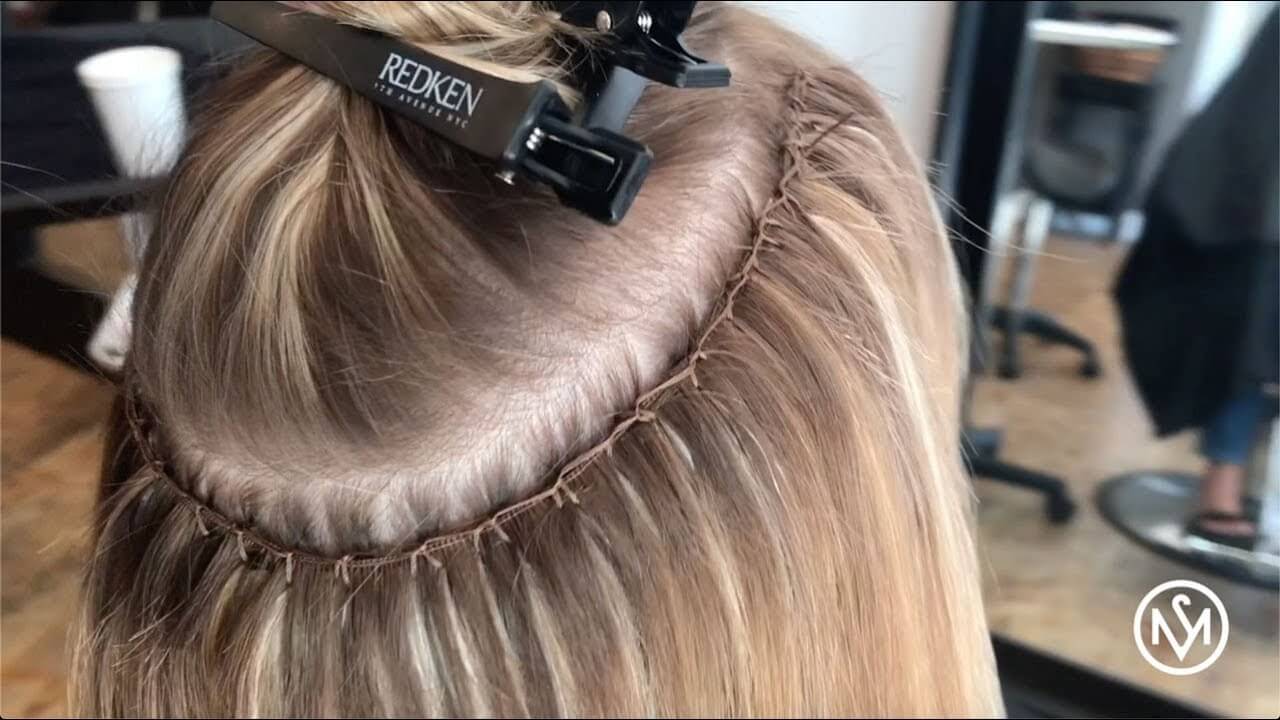
- Braid Creation: Small, tight braids are created along the scalp in horizontal rows.
- Weft Preparation: The wefts may be doubled or folded for added strength or volume.
- Sewing Application: The weft is sewn directly onto the braids using thread and a needle.
- Row Completion: Multiple tracks are installed to achieve the desired fullness.
This process is generally faster but can create more tension and bulk than hand-tied methods.
VI. Making Your Decision: Which Weft Type Is Right for You?
Choosing between hand-tied and machine weft extensions ultimately depends on your unique priorities:
1. Choose Hand-tied Wefts Extenions If:

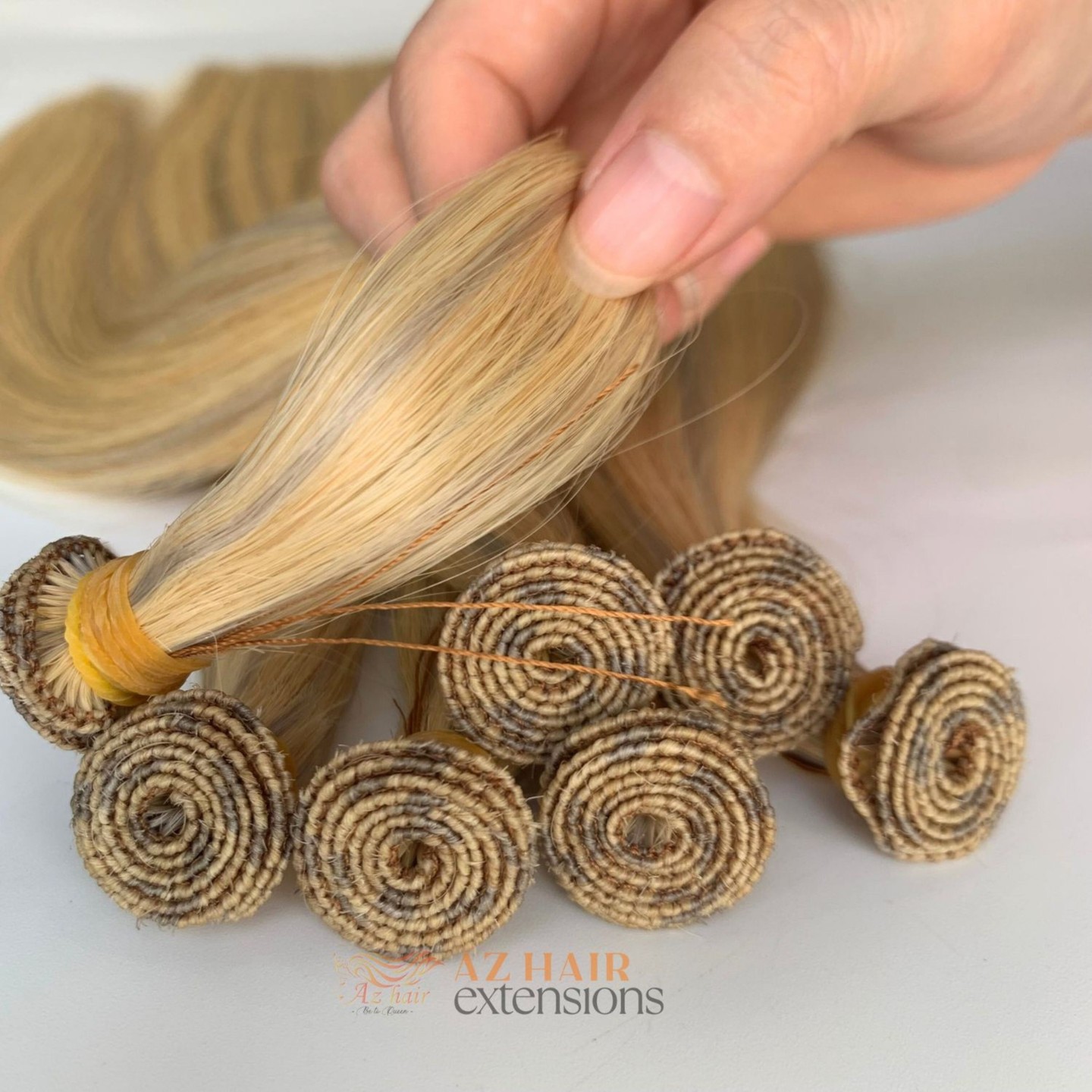
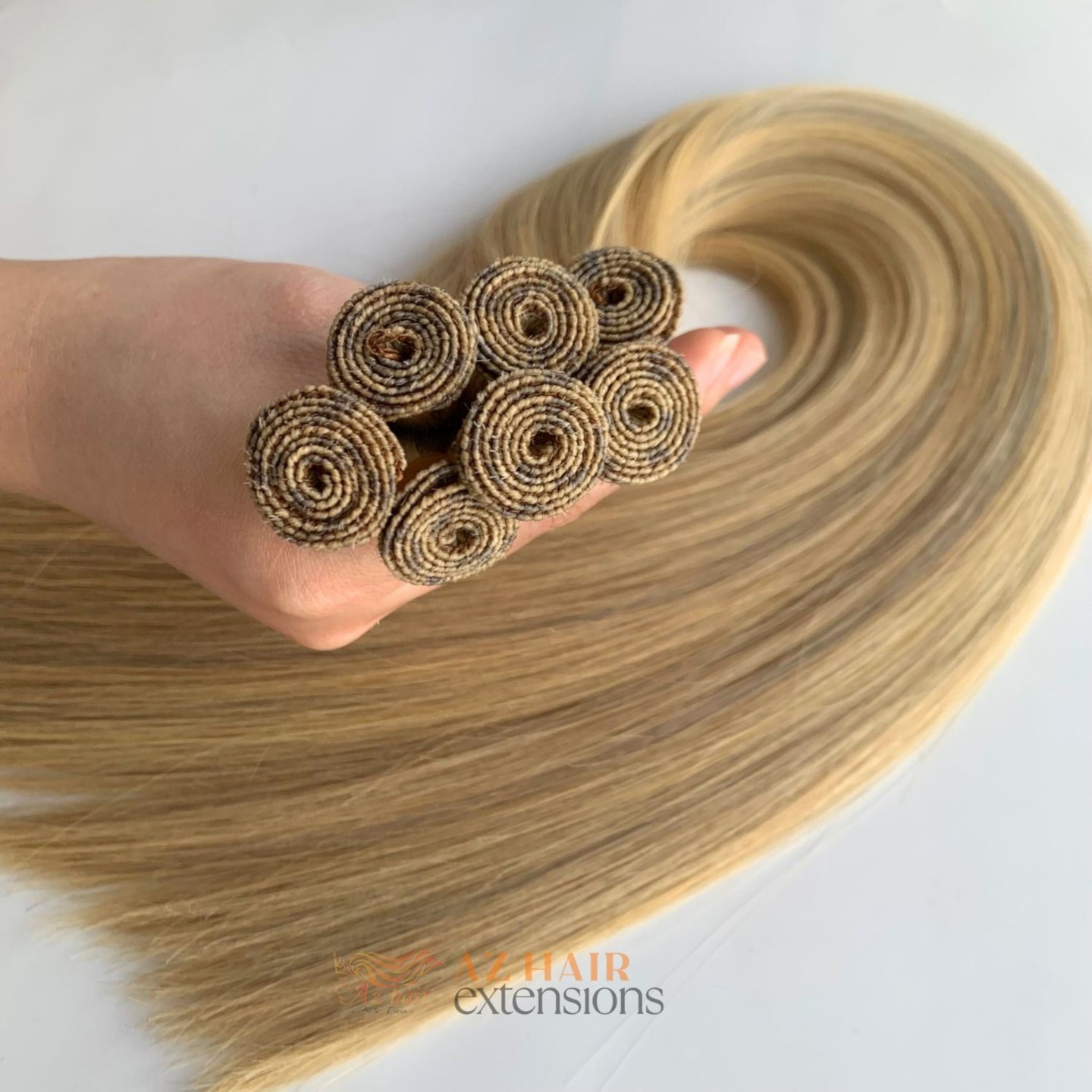
- You have fine or thin hair that needs seamless integration
- Comfort is your absolute top priority
- You’re seeking the most natural movement possible
- You’re willing to invest more for premium quality
- You want extensions suitable for active lifestyles
- You have a sensitive scalp that needs a gentle application
2. Choose Machine Wefts Extenions If:
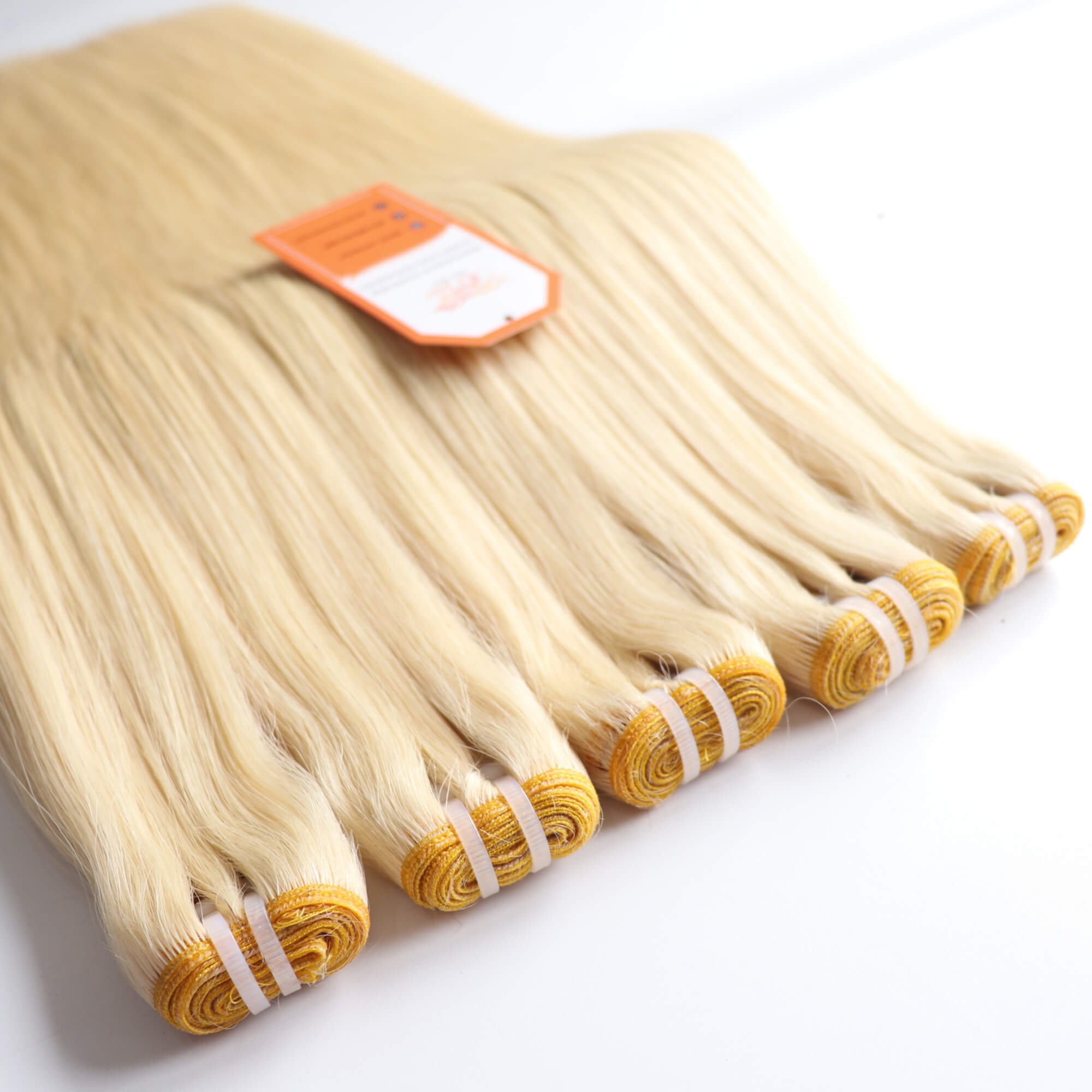


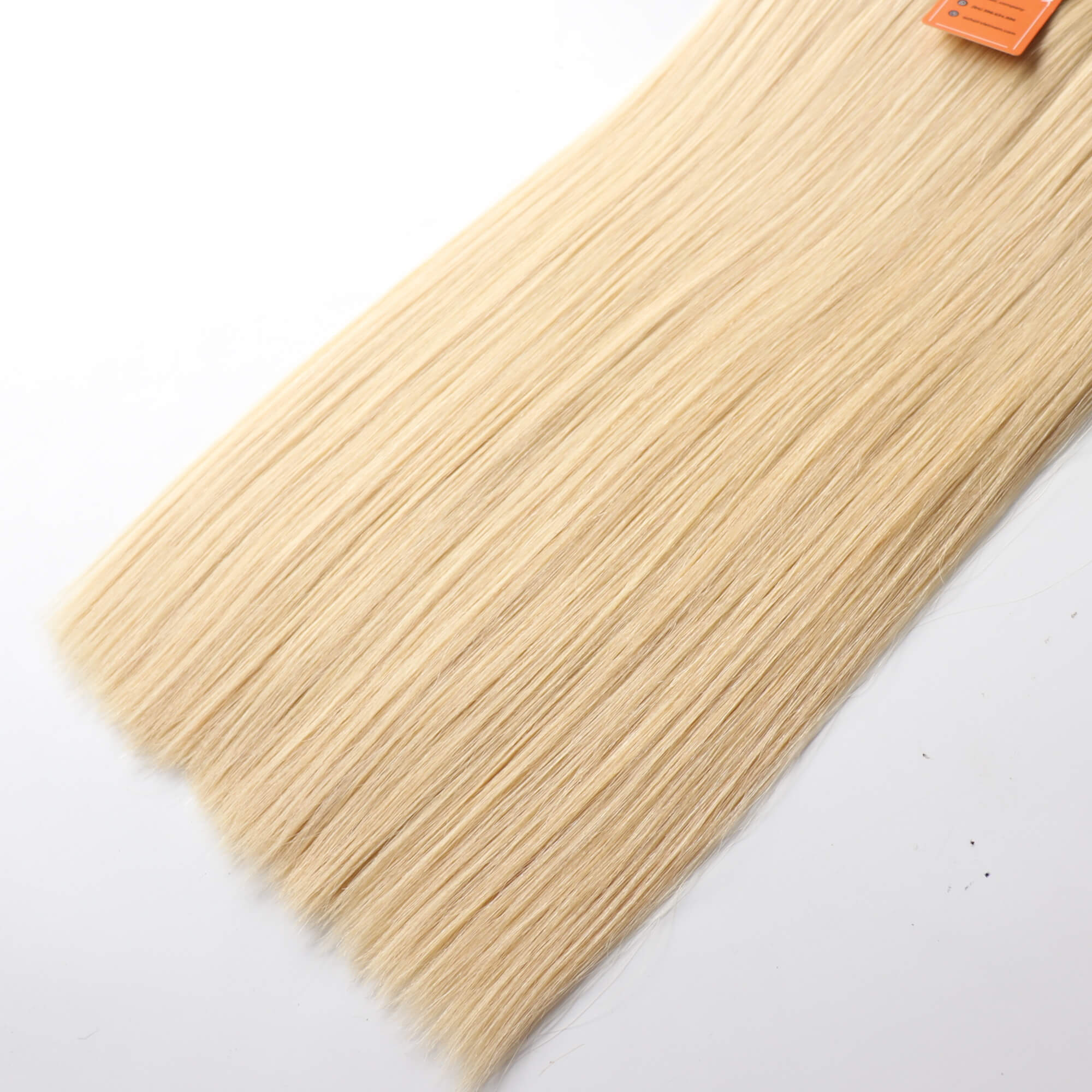
- You have thicker hair that can easily conceal wefts
- Budget considerations are important to you
- You prioritize durability over ultimate flexibility
- You’re new to extensions and testing the waters
- You want a simpler maintenance routine
- You’re seeking maximum volume enhancement
VII. Where To Buy High-Quality Hand-tied Weft and Machine Weft Extensions?
Operating in the hair business for decades, AZ Hair Vietnam is one of the most professional and reputable Vietnamese organizations in hair manufacturers and trading premium Hand-tied Weft hair extensions, Machine Weft hair extensions, and Asian human hair extensions across the globe. We are proud to be the first Vietnamese hair company that has been verified by Alibaba.

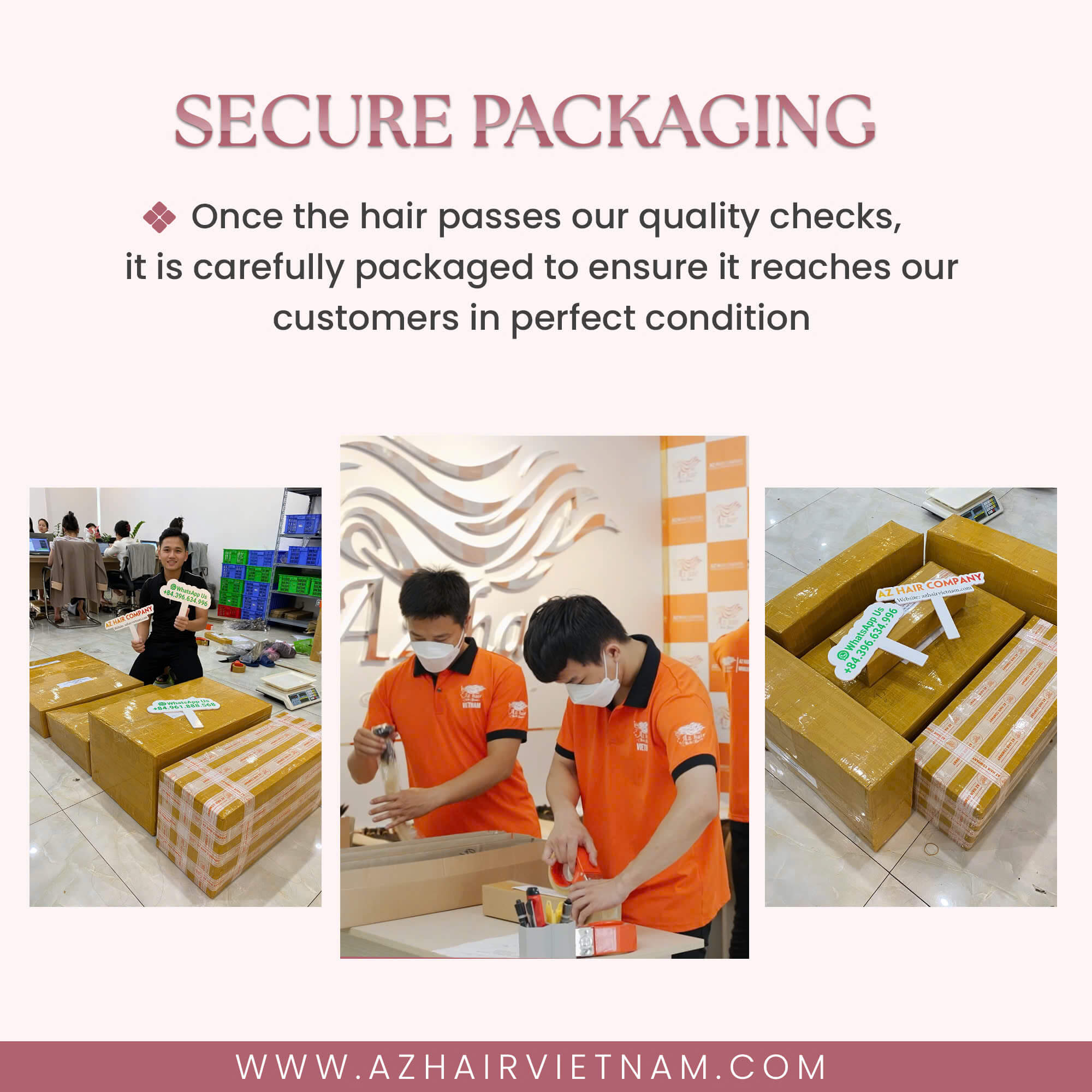
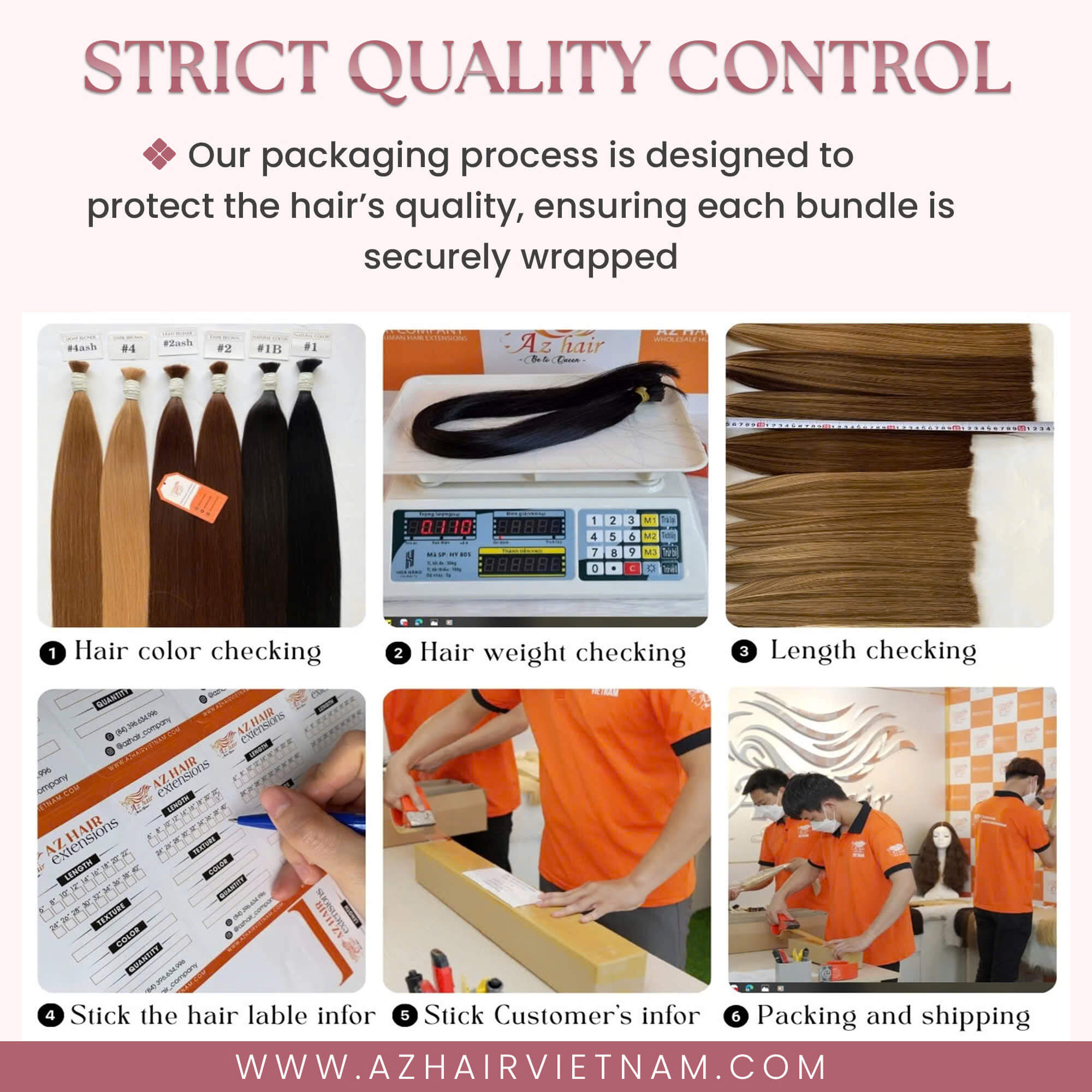
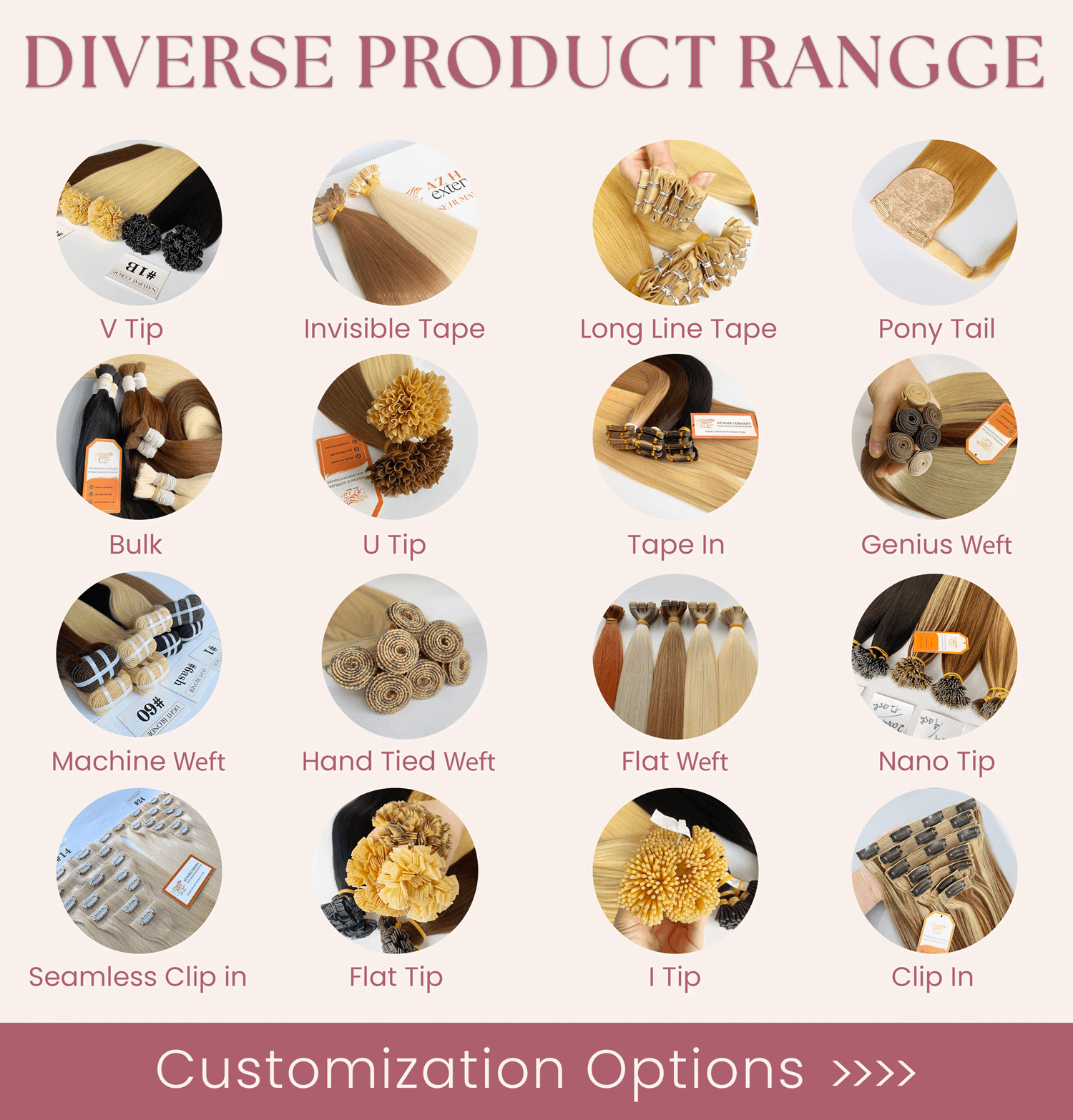


With the strong renewal and production ability to satisfy a variety of quality requirements, AZ Hair is gradually building our prestige as a factory supplying a variety of qualified hair at reasonable prices. Through the years, we have succeeded in building the brand name for ourselves as well as our reputation in the international market. AZ Hair is always appreciated for genuine consumer feedback concerning high-quality hair and reasonable rates, clear policies (of payment, shipping, and returns, for example), a wide range of hair options, and excellent customer care services.
AZ Hair is always appreciated for genuine consumer feedback concerning high-quality hair and reasonable rates, clear policies (of payment, shipping, and returns, for example), a wide range of hair options, and excellent customer care services.


We’ve found that clients who invest in high-quality hair, regardless of weft type, report greater satisfaction with their extensions. The quality of the hair itself often makes as significant a difference as the construction method.
VIII. Conclusion: Making an Informed Choice
When deciding between hand-tied weft vs. machine weft hair extensions, there’s no universally “best” option – only the right choice for your specific needs, hair type, lifestyle, and budget. Whichever option you choose, proper installation by a certified professional and diligent aftercare are essential to achieving the beautiful, confidence-boosting results you desire. Your extension journey should begin with a thorough consultation with a qualified stylist who can assess your unique needs and make personalized recommendations.


 BEST SELLING PRODUCTS
BEST SELLING PRODUCTS Wig Hair
Wig Hair WHOLESALE
WHOLESALE Contact us
Contact us Sale Events
Sale Events
